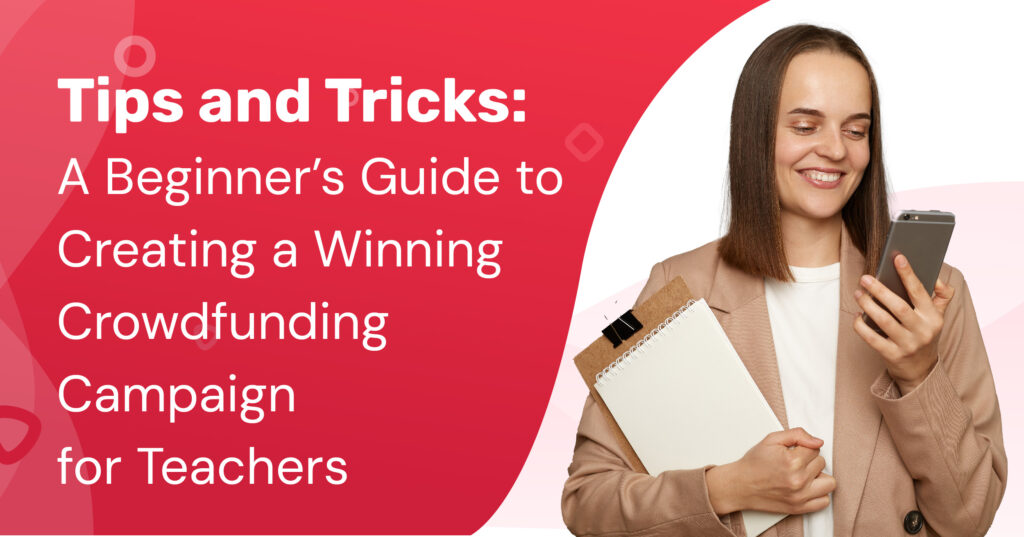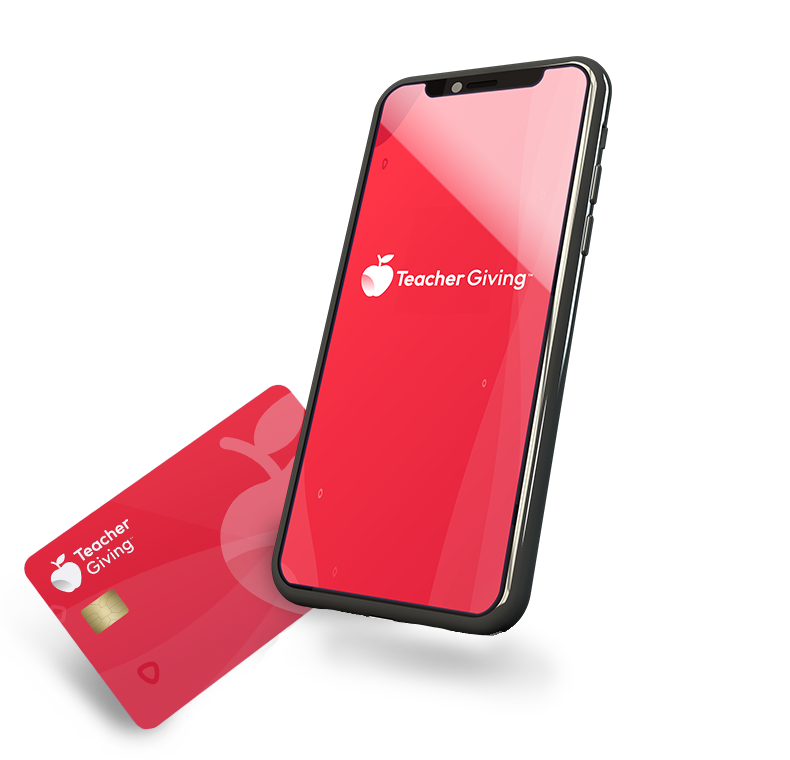Teaching is a rewarding but often challenging profession, especially when resources are limited. Despite their passion and dedication, many teachers face financial constraints that can impact their creativity and teaching strategies in the classroom. Many teachers (around 94%) end up dipping into their own pockets to cover classroom needs, from basic supplies to special projects and even field trips.
That’s where crowdfunding comes in. Crowdfunding allows teachers to bridge the funding gaps by reaching out to their communities for support. It’s a way for teachers to get the resources they need when they need them. According to some estimates, educators in the United States bring in nearly $200 annually through online crowdfunding.
With the right campaign, teachers can bring creative projects to life, buy up-to-date materials, and incorporate new technology that enhances learning. These improvements not only make learning more fun and interactive but also help encourage teachers and keep them excited about the future of their classrooms.
Whether you’re new to crowdfunding or looking to refine your approach for a more effective campaign, we’ve got you covered. We’ll break down the basics of crowdfunding and share practical tips and strategies to make your fundraising a success.

Planning Your Crowdfunding Campaign
Define Clear and Specific Goals
The first step in planning your crowdfunding campaign is to identify exactly what you need for your classroom. Be specific about your goals. Are you looking to buy new books, upgrade technology, or purchase classroom furniture? Clearly defining your goals will help you create a focused and compelling campaign that resonates with potential contributors.
If you’re not sure where to start, here’s a list to help spark some ideas:
Basic Supplies:
- Writing utensils (pencils, pens, markers)
- Notebooks, paper, and folders
- Whiteboards and markers
- Classroom organizers and storage bins
Technology Upgrades:
- Computers, laptops, or tablets for students
- Interactive whiteboards or smartboards
- Educational software subscriptions
Classroom Furniture:
- Desks or tables and chairs for students
- Comfortable seating options for reading areas
- Storage solutions for books, supplies, and equipment
- Flexible seating options for collaborative learning
Educational Materials:
- Books for classroom libraries (fiction, non-fiction, reference)
- Art supplies (paints, brushes, clay, construction paper)
- Science kits and laboratory equipment
- Math manipulatives and educational games
Special Projects and Experiences:
- Field trips to museums, nature reserves, or historical sites
- Guest speakers or workshops
- Performing arts programs or musical instruments
- STEM projects or robotics kits
You can also find inspiration from your students! Ask them what they would like to see in the classroom. This not only helps them feel included, but it gets them excited about your class and engaged in the fundraising efforts.
Prioritize Needs for Maximum Impact
Once you’ve identified your needs, prioritize them. Determine which items or projects will have the most significant impact, focusing on the most urgent or beneficial needs first. This prioritization helps you allocate your efforts and resources more effectively, ensuring that your campaign makes a meaningful difference in your classroom.
Study Successful Campaigns
Before launching your campaign, take some time to research and study successful crowdfunding campaigns, especially those related to education. Look at what made these campaigns stand out. Pay attention to how they told their story, engaged with their audience, and structured their goals and rewards.
Gather Ideas and Best Practices
As you research, gather ideas and best practices that you can incorporate into your campaign. Take note of creative approaches, effective communication strategies, and compelling visuals used in other campaigns. Adapt these elements to fit your unique needs and style. The more inspiration and knowledge you gather, the better equipped you’ll be to create a standout campaign that captures the hearts and support of your community.
Establish a Compelling Narrative
Your campaign story is the heart of your crowdfunding effort. To create a compelling narrative, make it personal and relatable. Share your own experiences as a teacher and the challenges you face in providing the best for your students.
Talk about why you are passionate about teaching and what motivates you to seek additional resources. By opening up and sharing your story, you can connect with potential supporters on an emotional level, making them more likely to support your cause.
Highlight the Impact on Students and Learning
Clearly articulate how the funds will impact your students and their learning experience. Explain how the resources or projects will make a difference in the classroom.
Whenever possible, quantify the impact of contributions. For example, you could explain how access to new educational materials is expected to improve reading proficiency levels or how participation in a STEM workshop will enhance students’ problem-solving skills.
Share success stories of students who have benefited from similar projects or resources in the past. This could include improved academic performance, increased engagement in class, or the pursuit of higher education or career opportunities.
Provide specific examples and, if possible, share anecdotes about your students to illustrate the need and potential impact. This helps supporters see the tangible results of their contributions.
Utilize Visual and Multimedia Elements
Visual content is a powerful tool for engaging potential contributors. Use images, videos, and graphics to bring your campaign to life. Include photos of your classroom, students (with appropriate permissions), and the items or projects you’re raising funds for. A well-produced video can be particularly effective, as it allows you to convey emotion and enthusiasm in a way that words alone cannot.
Here are some tips:
- Images: Use high-quality, clear images that capture the essence of your classroom and the excitement of your students.
- Videos: Create a short, compelling video explaining who you are, what you need, and why it’s important. Keep it under three minutes to maintain viewer interest.
- Graphics: Use graphics to visually represent your goals and progress. Infographics can be a great way to show budget breakdowns or project timelines.

How to Spread the Word About Your Crowdfunding Campaign
Use Social Media
Social media is a powerful tool for promoting your crowdfunding campaign. Each platform offers unique ways to reach and engage with potential supporters:
- Facebook: Create a dedicated post about your campaign and pin it to the top of your profile or page. Share updates regularly, including photos and videos. Engage with comments and encourage shares.
- Twitter/X: Tweet about your campaign with compelling messages and visuals. Use Twitter/X threads to tell a more detailed story and update followers on progress. Retweet mentions and thank contributors publicly.
- Instagram: Use Instagram Stories and posts to visually share your campaign. Create a fundraising highlight on your profile. Use engaging photos and short videos to keep followers informed and excited.
- TikTok: Create short, attention-grabbing videos that showcase your campaign and its impact. Use trending sounds and challenges to increase visibility and engage with a younger audience. Remember to include a call to action directing viewers to your crowdfunding page.
Engage with Local Media
Local media can amplify your campaign’s reach:
- Press Releases: Write a compelling press release and send it to local newspapers, TV stations, and radio stations. Highlight the unique aspects of your campaign and its impact on the community.
- Media Outreach: Reach out personally to journalists and media outlets. Offer interviews or invite them to visit your classroom to see firsthand what their support could help achieve.
School Newsletters and Community Bulletin Boards
Leverage existing communication channels within your community:
- School Newsletters: Include a section about your campaign in your school’s newsletter. Provide a link to your crowdfunding page and encourage parents and staff to share it.
- Community Bulletin Boards: Post flyers or announcements on community bulletin boards in places like libraries, community centers, and local businesses.
Leveraging Personal Networks
Your personal network can be one of your strongest assets:
- Share Requests: Ask friends, family, and colleagues to share your campaign on their social media platforms. Provide them with sample posts and images to make it easy for them to help.
- Personal Messages: Send personalized messages to people in your network explaining your campaign and asking for their support. People are more likely to respond to personal appeals.
Organize Small Events or Gatherings
Face-to-face interactions can make a big difference:
- Events: Organize small events or gatherings to promote your campaign. These could be informal get-togethers, classroom open houses, or community events where you can speak about your campaign and encourage contributions.
- Presentations: To promote your campaign and its goals, give presentations at local clubs, parent-teacher associations, or community groups.
Following Up During and After Crowdfunding
Engage and Update Contributors
One of the key aspects of a successful crowdfunding campaign is maintaining ongoing communication with your supporters. Regular updates keep them engaged and reassures them that their contributions are making a difference. Share updates frequently to keep your campaign fresh in their minds. Use these updates to:
- Provide Progress Reports: Let contributors know how close you are to reaching your goal and any significant milestones you’ve achieved. For example, if you’ve reached 50% of your funding goal or acquired a major piece of equipment, share the news!
- Show Behind-the-Scenes Work: Give a glimpse into the progress and preparation happening in your classroom. This can include setting up new resources, planning projects, or student reactions to the campaign.

Thank Supporters Publicly and Privately
Expressing gratitude is crucial in maintaining a positive relationship with your supporters. Show appreciation both publicly and privately to make them feel valued:
- Public Thank Yous: Use social media and your campaign page. Tag supporters in posts (with their permission) and acknowledge their contributions. This not only shows your appreciation but also encourages others to contribute.
- Private Thank Yous: Send personalized thank-you notes or emails to each supporter. Mention their specific contribution and express your gratitude for their support. A personal touch goes a long way in building a lasting connection.
Highlight the Impact of Their Contributions
Help supporters see the tangible impact of their contributions by regularly highlighting how their funds are being used:
- Impact Stories: Share stories and testimonials from students about how the new resources are improving their learning experience. For example, a student might talk about how a new set of books has sparked their interest in reading.
- Visual Updates: Use photos and videos to show the resources in action. This could be students using new technology, participating in funded activities, or displaying projects made possible by their support.
- Reports and Summaries: Provide periodic summaries that outline how funds have been allocated and the results achieved. This transparency builds trust and shows that their contributions are making a real difference.

Why Teachers Should Use TeacherGiving for Their Crowdfunding Campaigns
TeacherGiving offers a streamlined solution tailored to educators’ specific needs, making it easier than ever to secure funding for classroom essentials. With real-time funding, resources become available almost instantly after contributions are made, allowing teachers to promptly enhance their classrooms. Integration with digital wallets and online retailers ensures seamless purchasing processes, maximizing the impact of every contribution.
Transparency is key at TeacherGiving, where supporters can readily locate classrooms and contribute to specific needs, building connections and encouraging sustained support. Additionally, teachers retain autonomy over how funds are allocated, ensuring that resources address the most pressing needs of their students. TeacherGiving maximizes funding directed toward classrooms, offering teachers peace of mind and ensuring no contributions are wasted.
No teacher should stand alone in their effort to provide for their classroom. TeacherGiving is committed to giving teachers the support they need and helping them shape future generations — without worrying about how to stretch their budget for paper and poster board.
Final Thoughts
Crowdfunding is not just about raising funds and collecting contributions; it’s about building a community of supporters who believe in the importance of education and want to see your students succeed.
Remember, your dedication and passion for teaching are your greatest assets. With a well-planned campaign, a compelling story, and a streamlined platform, you can overcome funding challenges and create a richer, more engaging learning environment for your students.



